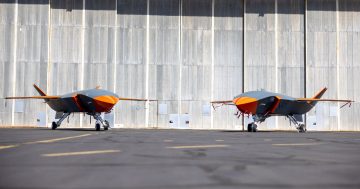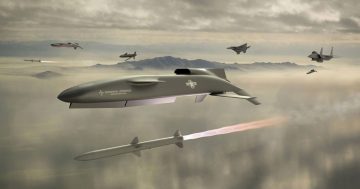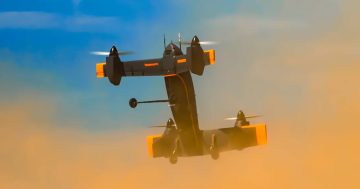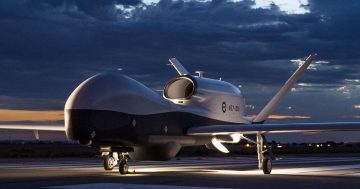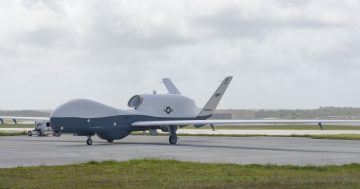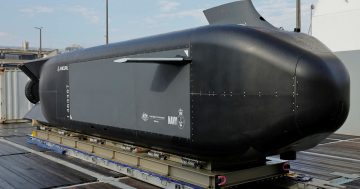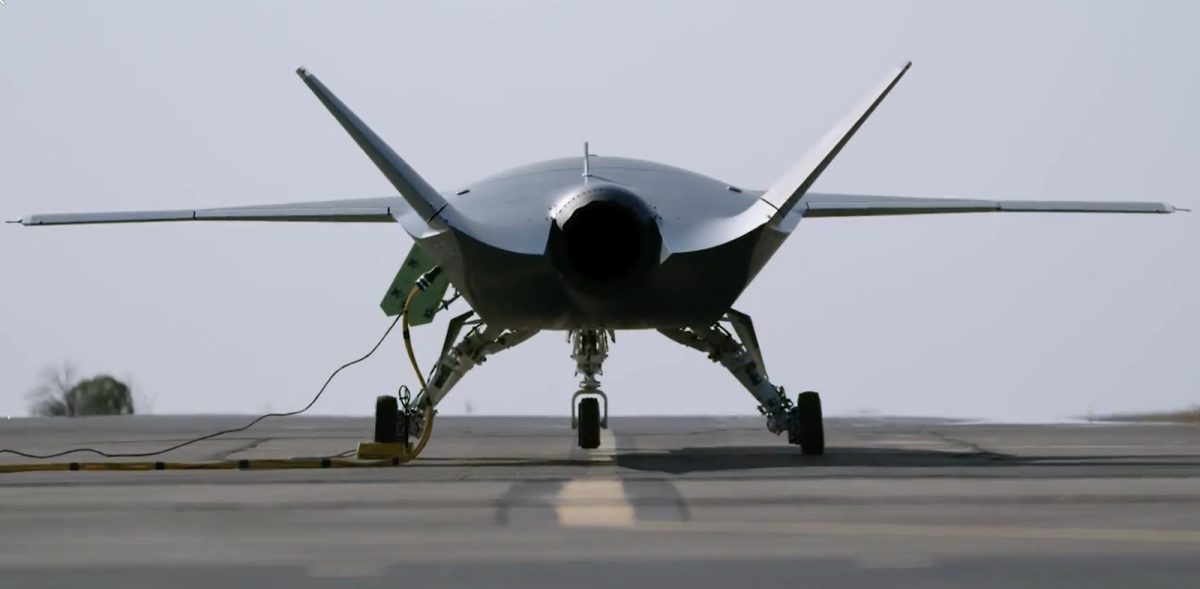
An MQ-28A powers up on the ramp at the Woomera Test Range. Photo: Screenshot from Boeing B-Roll.
Hot on the heels of the US Air Force contracting five companies to develop an uncrewed Collaborative Combat Aircraft (CCA), the Australian Government has kicked in another $400 million for the Royal Australian Air Force’s (RAAF) own CCA program.
The Australian-designed Boeing Airpower Teaming System (ATS) was unveiled at the 2019 Avalon Air Show to meet an air force requirement for an uncrewed Loyal Wingman demonstrator program. The aircraft made its first flight in 2021, and ever since, trials have been underway at the remote Woomera Test Range in outback South Australia.
The ATS was given the MQ-28A Ghost Bat designation in May 2022, when seven additional Block I air vehicles were ordered.
In line with a recommendation from the Defence Strategic Review, Defence signed a CCA development project arrangement with the USAF in March 2023. It has also been reported that two Ghost Bats have been sent to the US for evaluation under the cooperative agreement, and that they may form the basis of Boeing’s bid for the USAF’s CCA program.
The Loyal Wingman/CCA concept would see the MQ-28A fly in a loose formation with other crewed combat aircraft – either autonomously or under the control of an operator on the ground or in another aircraft – and carry additional sensors, weapons, or electronic warfare packages to support the overall mission.
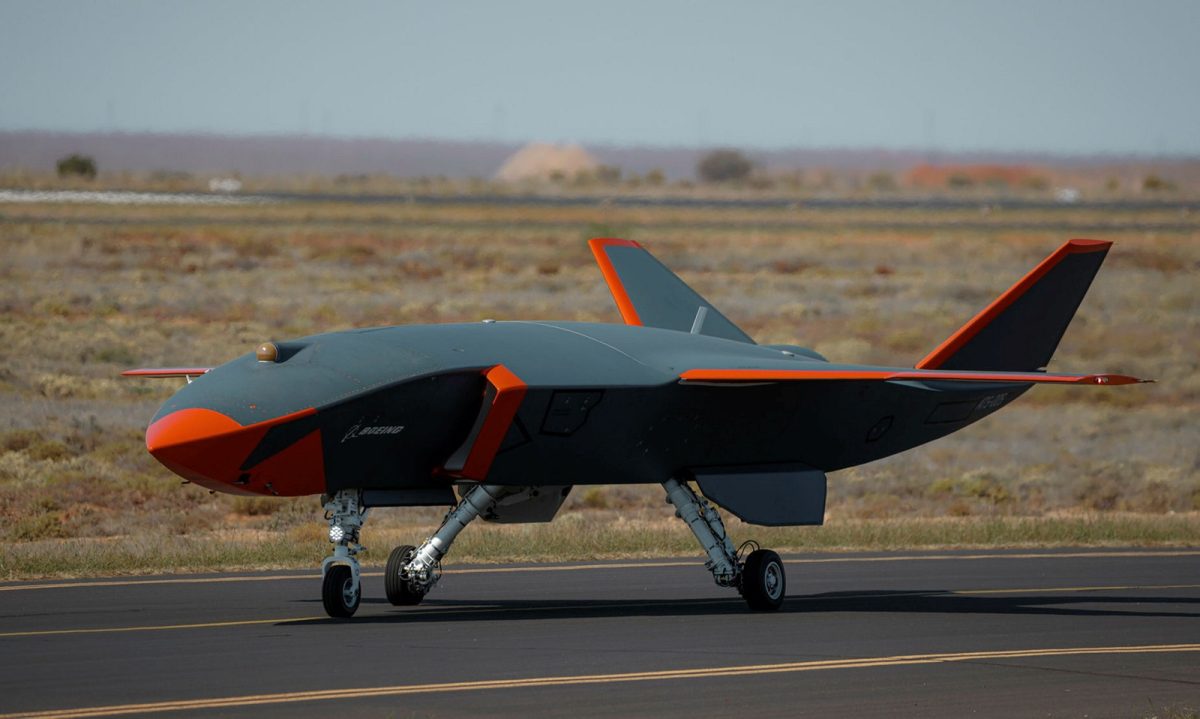
The MQ-28A Ghost Bat is the size of a small fighter, and can carry sensors, weapons, or electronic warfare packages. Note the Infra-Red Search and Track turret on its nose. Photo: ADF.
If necessary, the uncrewed aircraft can fly ahead of the main strike group to clear a path through enemy defences, or operate inside an integrated air defence system.
It can also be used to escort and protect high-value assets such as the E-7A Wedgetail command and control and P-8A maritime surveillance aircraft, each of which has large crew components and is very expensive.
“This technology has the potential to turn a single fighter jet into a fighting team with advanced sensors that are like hundreds of eyes in the sky,” Minister for Defence Industry Senator Pat Conroy said at a media conference on Friday morning (9 February).
“Ghost Bat and other drones of the future that the air force is working on right now will function like smartphones to be upgraded, often with new and advanced features.”
The financial boost will see three more air vehicles built to a Block 2 standard with an “enhanced design” and upgraded sensors and payload capabilities, and will fund the ongoing flight test program that will culminate in a capability demonstration program in 2025.
The Minister said the capability demonstration would be important to drive support for the project, both locally and internationally.
“Obviously, the US has a number of CCA programs that this may fit into,” he said. “But at the moment this is an Australian investment into an Australian-designed and Australian-made platform.”
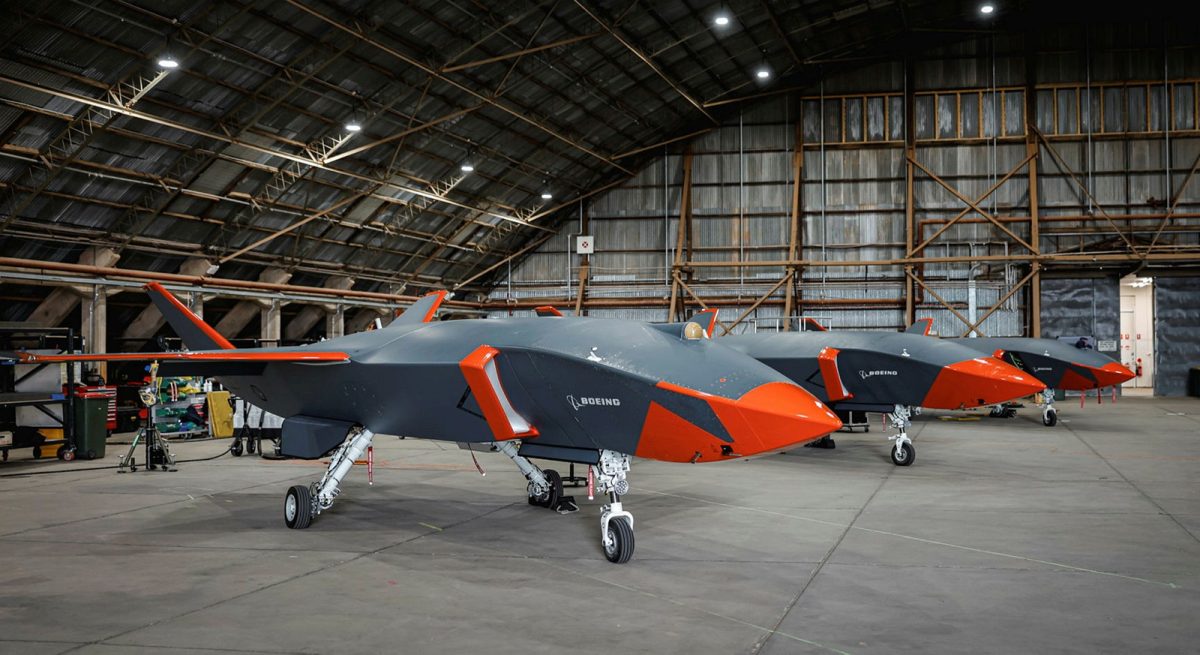
Three of the 10 MQ-28As funded so far in the hangar at Woomera. Photo: ADF.
Senator Conroy said the Ghost Bat was the first military aircraft to be designed, engineered and manufactured in Australia in more than 50 years, and underscored the depth of innovation and expertise in Australia’s defence industry.
“More than 200 Australian companies have already contributed to the MQ-28A program, including more than 50 small and medium enterprises within the supply chain,” he said.
“This project demonstrates that with the appropriate support from government, Australia’s defence industry can continue to be a world leader and a key source of jobs.
“The prosperity and security of our nation will always be a top priority for the government. That’s why giving our air force the critical capabilities it needs to protect Australians, and their interests, is paramount.”
Chief of Air Force AIRMSHL Rob Chipman said there was no reluctance on the part of air force pilots to get into uncrewed technologies.
“We absolutely understand that uncrewed systems are part of the future of air combat,” he said. “And it is not just inspiring, but it is vital for us to be investing in the sovereign capability in Australia.”
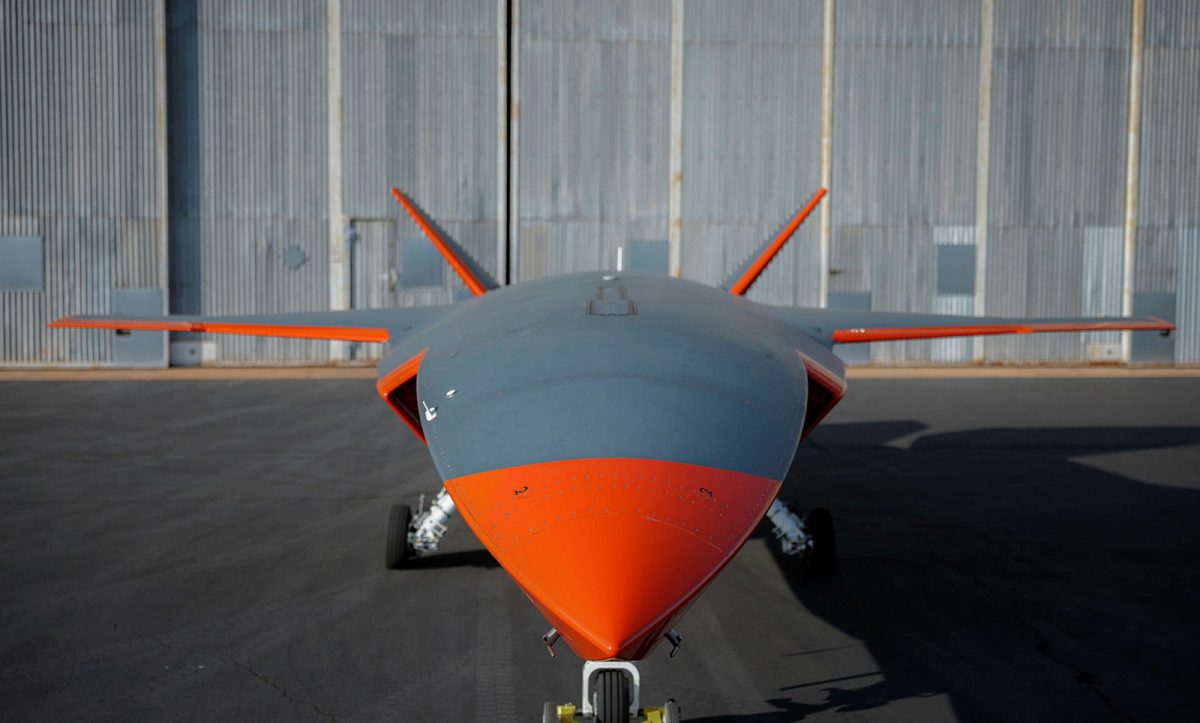
Up to 10 Ghost Bats have been built so far, with another three improved Block 2 aircraft funded under the new agreement. Photo: ADF.
In a separate statement, Boeing Defence Australia vice-president and managing director Scott Carpendale said the new MQ-28 agreement continued Boeing’s partnership with the Commonwealth and Australian industry in developing this important CCA capability for Australia.
“Since achieving concept development to first flight in three years, we have significantly progressed the design engineering, manufacture and flight testing of MQ-28 Ghost Bat, and are applying those learnings back into our Australian production system to advance the capability,” he said.
“The latest agreement enables us to continue the developmental pathway of MQ-28 to prove the MQ-28 systems, including validating the mission system, payloads and operational requirements, which includes producing three Block 2 aircraft for the RAAF.”
Original Article published by Andrew McLaughlin on Riotact.


